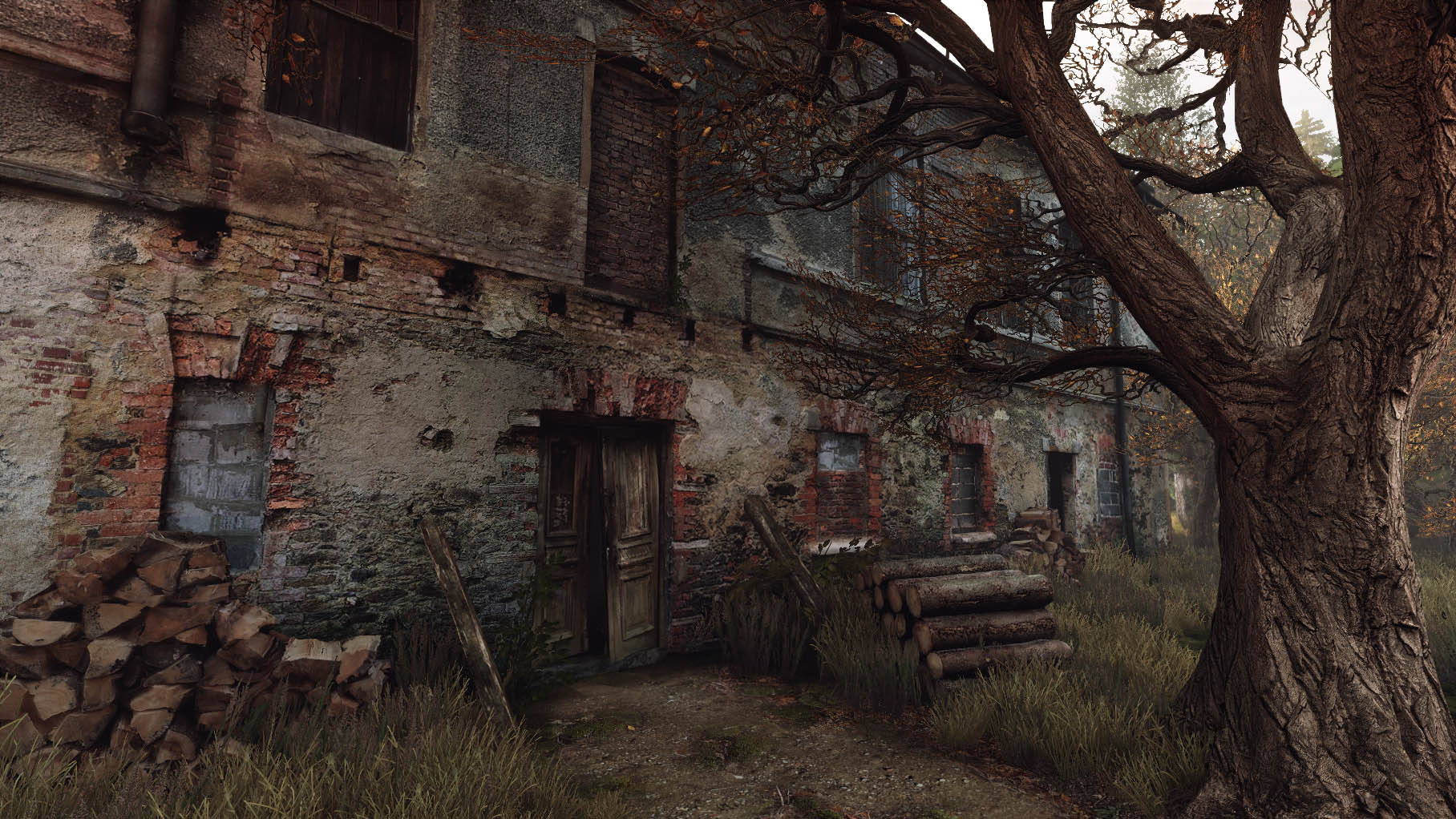How long do you think it will be before Video game graphics reach the point where a screenshot for example could be mistook for a real photo? I'm curious what people think. I had previously thought it would be a long time but after playing Witcher 3 for a while i'm convinced it could take just a few years. Do you think graphics hardware will reach a tipping point?
2020
Look at the vanishing of ethan carter.

I mean, it's pretty darn close. Ignore the tree and it looks pretty convincing, besides some of the ground (grass).
That game is pretty freakin close, it has an uncanny valley affect it's so close to real but it doesn't feel quite right.
writes down the name of said game to check out later
What? Pft, that game's graphics are crap. I mean, you could probably run it on max with an APU. Those graphics are so... Yeah... Yeah, that's pretty trippy how good they are. I agree on the 2020 prediction. That's about the same time that Moore's Law will run out; after that, it's either multiple CPUs and GPUs in the same system or designing them in multiple layered channels. That or quantum computers, which is a manufacturing process still out of reach.
Aye. Some of it was done with photogrammetry.
This article has some cool models in it you can look around (scroll down): HYPERLINK WOA

Computer advancement is actually really exciting for me because I'm a digital student going into video games. It fuels my addiction for hardware and HD graphics pr0n like no other. And since I've been doing pre planning and writing for an MMO I'll eventually set out to make, I've been thinking about graphics a lot. You can imagine the fits of excitement from knowing this is how close we already are to realism.
One thing to make a scene other to make a game that can be computed fast enough - guess few peta scale should do the job ~ so i say maybe in 2050s with advancment in vr image on monitor wont fool me at least, and peta might be not enough to fool me at lest maybe well have something better.
unreal tech demo
the cars and lighting in gta iv mod
What is needed for photo realism is.
1. accurate lighting.
2. believable animations
3. good textures and texture layering.
I live in Houston TX...graphics in The Witcher 3 are already better than real life here.
I've seen that unreal demo, I wonder how long till a developer uses it to that potential though? I have a feeling it's going to be a while.
But, how can graphics be real if our eyes aren't real?
All of these advancements are nice, but they are nothing with out extremely high frame rates. Like 500+. Of course those also need the hard ware to go with it. so I would say @anon5205053 is about right 2050+
EDIT: To go into depth about what I think it would take is much more than we can even imagine as a game today.
You would need interaction. On a scale not even imagined in games to day, Everything would have to be an intereactable physics objects all with their own weight centres of gravities. Surfaces would need real texture not just fancy light tricks and flat image textures. Sandpaper is a great example. Can you imagine rendering real sandpaper? 4000 grit. 4000 individual objects per inch all with full detail, no two alike, on a flexible piece of material again with its own fine texture. Then you have wear on each of those 4000 pieces of sand per inch, they would have to be able to come loose and deposit themselves on other surfaces. The other surface would have to be destructible but not like we know. It would have to have a fully solid internal model that can be worn away piece by piece and not in a pre-determined way.
That all ready is beyond anything ever remotely possible in 3D graphics right now on any sort of usable scale. It would only be a video at best and take months to render out. Which would mean it is predetermined and all ready fails the fools me test if you were to see it twice.
Think of it, every piece of fabric would be flexible, stuffing in pillows would have to have individual fibres each with elasticity and friction, millions of them in a single pillow. And stains? Liquids... Water would need to have every molecule moveable and react-able with each of its surrounding molecules. Air would need to be a real substance to pass through, drag would a a real factor not some calculated number.
And all of this is only taking into account things on screen. What about the person controlling it. It would feel hollow and fake, in face it would not feel at all, you would never be able to touch the surroundings feel the textures, experience the smells.
The absolute closest we have right now is actually the audio in games. we can all ready have the audio reflect, bounce around you, come from angles and move around you in realtime today. That part is done, but fooling our eyes? That is a step so large in its entirety that it is difficult if not impossible to comprehend the jump it would take.
The other issue with all this is the time it would take to create anything even close to this. Games all ready take on the order of years to complete development. Movies like Toy Story and Shrek took 5 years plus and they were not interactable and nowhere near real.
We should have the capability in the 2050+ time frame but I truly don't think there will ever be a game that will fool us fully simply because it would take generations of man to make one.
Who says you need eyes to render graphics? cough Full Dive cough
Modded GTA IV was so damn realistic. More so than V which is a shame.
As for the question, 2017-2018.
Needs silhouettes in the window.
My guess is 2025.
I want goggles that project lasers directly onto my retinas, at a resolution slightly greater than the retina itself at that distance (8k would do it for me). I also want a refresh that is a minimum of 120Hz (locked to frames). The laser must be able to track, or reflect off mirrors, faster than my eyes can move so there's never any mechanical lag. Sensing nerve impulses in addition to eye movement might help on that front.
Perhaps it could be done with a micro-mirror array, or a single mirror that is ultra-lightweight and can track in x/y across the gentle hemisphere of the goggles. Another option would be a rather miniscule laser that is small enough to move around and constantly remain on target.
The goggles must also have highly accurate accelerometers, as well as an array of cameras (like spider eyes) to capture multiple angles, zoom, and light frequencies without moving parts. I'd like zoom and frequency shift to be automatic, in that it becomes subconscious. Maybe zoom can be activated by invoking the Legolas stare.
I want to put them on and have a mode that renders my outside world such that it looks >99% the same as it would through my eyes. This way I can leave them on and mostly enjoy augmented reality, night vision, zoom etc., unless I wish to enjoy a game or movie.
In that case, computing power could be minimized by rendering a gradient resolution, with the sharpest point coinciding with the most high resolution portion of the retina. Outside that point, resolution dips but there would be no way for me to know this and it would drastically reduce computing power. Maybe it's akin to throwing away frequencies in MP3s.
A device like this would probably be the last step before -- around 2035 to 2040 -- we commonly insert/grow an extra layer over our retina that requires no external hardware to display full resolution, and even block incoming light. After that we go directly to our own GPU, the visual cortex.
Sorry - long..
Until developers stop giving us buggy games.
Actually, they specifically made the artwork more stylized than it originally was. They were aiming for something that wasn't quite photorealistic. Even still, they got damn close by today's standards. Still though, it is pretty obvious when playing that it isn't real. I think that the biggest thing that needs to be addressed in order to get really close to accurate is animation and physics. If the textures and lighting effects are great, but the people move like robots, then you aren't fooling anyone.
